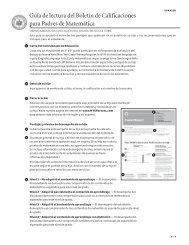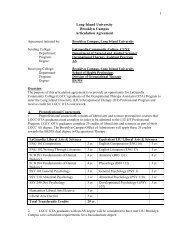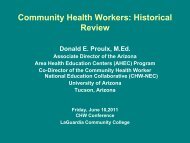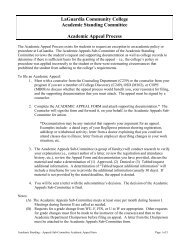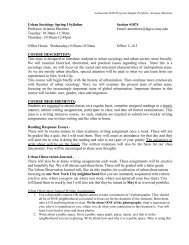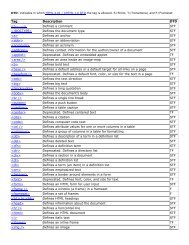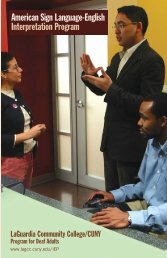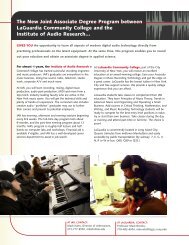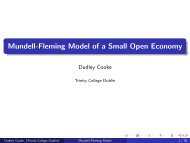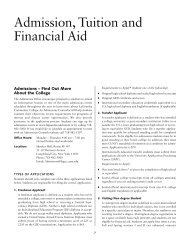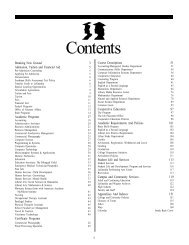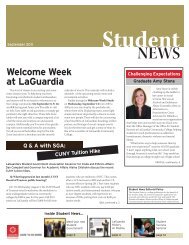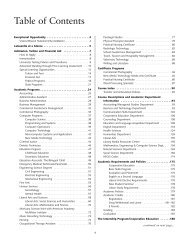Toxic Bulbs Frank Wang, Mathematics Department More consumers ...
Toxic Bulbs Frank Wang, Mathematics Department More consumers ...
Toxic Bulbs Frank Wang, Mathematics Department More consumers ...
You also want an ePaper? Increase the reach of your titles
YUMPU automatically turns print PDFs into web optimized ePapers that Google loves.
<strong>Toxic</strong> <strong>Bulbs</strong><strong>Frank</strong> <strong>Wang</strong>, <strong>Mathematics</strong> <strong>Department</strong><strong>More</strong> <strong>consumers</strong> are placing compact fluorescent light bulbs (CFLs) in their shoppingbaskets. Using 25 percent the energy of standard incandescent light bulbs (and lasting 10times longer), the swirly little tubes have become a symbol of green living and a means tofight climate change. Yet CFLs have a downside: the bulbs contain mercury and cannotbe tossed out with the ordinary trash.SENCER ApproachYou will put your scientific knowledge and mathematical skills to immediate use inunderstanding CFLrelated environmental issues. After you read an assigned article, youwill answer questions and perform mathematical calculations involving(a) percents(b) number sense(c) solving equations(d) linear functions
Reading: David Appell, “<strong>Toxic</strong> <strong>Bulbs</strong>,” Scientific American, October 2007, pp 30–31.
Reading: David Appell, “<strong>Toxic</strong> <strong>Bulbs</strong>,” Scientific American, October 2007, pp 30–31(continued from last page).
Sample ProblemEnergy experts tell us to replace regular incandescent light bulbs with compactfluorescent bulbs, but it seems hard to justify spending $15 on a light bulb. A 60 Wincandescent bulb costs 50 cents and has a lifetime of 1000 hours. A 15 W compactfluorescent bulb produces the same amount of light as a 60 W incandescent bulb and isintended as a replacement. It costs $15 and has a lifetime of 10,000 hours. Compare thelifecycle costs of 60 W incandescent bulbs to 15 W compact fluorescent bulbs. Which isthe cheaper source of light? Assume that electricity costs $0.10/kWh.AnswerFluorescent bulb:Cost of bulb: 15.00Cost of electricity for 10,000 hours:0 . 115 ´ 10000 = 15 . 001000Total cost: 15.00 + 15.00 = 30.00 (dollars)Incandescent bulb:Number of bulbs needed for 10,000 hours: 10000/1000 = 10Cost of bulbs: 10 ´ 0 . 50 = 5 . 00Cost of electricity:0 . 160 ´ 10000 = 60 . 001000Total cost: 60.00 + 5.00 = 65.00 (dollars)Conclusion: Although an incandescent bulb is much cheaper, in the long run (10,000hours), the fluorescent bulb will cost $30.00, while the incandescent bulb will cost$65.00.
Questions1. Roughly two billion CFLs will be sold in the U.S. this year, which represent 5 percentof the total light bulb sales. What are the total light bulb sales in the United States?2. In the U.S. about one sixth of children are born having been exposed to mercury levelsto a level that they are at risk for memory loss and learning disability. Let us supposethat there are 84 million children in the U.S. How many children are at risk of mercurypoisoning?3. According to the article, each CFL contains about five milligrams of mercury. WalMart announced a goal of selling 100 million CFLs annually. How many grams ofmercury is contained in 100 million CFLs?4. The recycling rate for fluorescent bulbs in the U.S. is about 24 percent. Let us assumethe recycling rate of 25 percent for WalMart CFL. How many grams of mercury is notrecycled?5. What do you do if you accidentally break a CFL?ReflectionThere is no costless solution to environmental protection, and all measures create theirown sets of issues. After performing the above calculations, do you have a deeperappreciation of the environmental challenge we are facing? Are you more aware of thenecessity of recycling programs? Write an essay to reflect your learning. You mightvisit the website of the Environmental Protection Agency at www.energystar.gov. Youcan also find a CFL recycling program in your area by visiting www.lamprecycle.org.



